Patronage Up Up & Away
Rail patronage shot up another 4.8% in the last month while overall Auckland public transport patronage for July was up 8.4% on the same month a year ago. Rail is up 15.8% in a year.
- Northern Express bus patronage continued its extraordinary growth, exceeding the annual PT average. Northern Express bus service carried 2,079,098 passenger trips for the 12-months with a growth in July 2011 compared to July 2010 of +14.2%.
- Patronage on other bus services was up 1.7% in July –and up 7.1% for the last 12 months.
- Ferry patronage was up 4.7% for the month.
Auckland public transport patronage totalled 65,903,949 passengers for the 12-months to July 2011 an increase of 5,096,948 boardings or +8.4%.
July monthly patronage was 5,368,936 an increase of 140,294 boardings or +2.7% on July 2010.
Rail monthly patronage for July is 838,198 an increase of 38,610 boardings or +4.8% on July 2010.
Rail success stories include:
- In the last 12 months, Western Line patronage is up 19.1%
- Onehunga is booming – a line some critics said pre-launch that it would not be popular. There were 58.932 passengers recorded using the Onehunga Line during July 2011. Since the inception of these services in September 2010 there have been 567,882 passengers recorded on Onehunga Line services
- Overcrowding eased with the start of the longer trains. In July there were no services reported to have average load factors above the 1.4 (i.e. four passengers standing for every ten seated passenger) target but this was not a good month to judge because of the 2 week school holidays.
In terms of rail performance, 84% of services were on time or arrived within 5 minutes of schedule. Onehunga was as usual the star performer (96%), Southern was 83%, Westerm Line was 82.1% and Eastern 80%. The slight dip in performance from the previous month is blamed on the introduction of 5 and 6 car trains in the mid-July coupled with the effects of work on and near the rail corridor in preparation for a major signalling commission over the weekend of 30/31 July.
The introduction of longer trains is said to have affected the station dwell times on services with longer trains allocated to them as the drivers had to adjust to where they stopped the trains and the staff had to familiarise themselves with changes in procedures.
Rail patronage had topped 10 million for the rolling twelve months of the latter part of July before easing back to end the month at 9,903,214 passengers for the 12-months which is an increase of 1,348,834 boardings or +15.8% on last year.
For the month of July 2011 there were 838,198 passengers recorded travelling by rail, and increase of 38,610 boardings or +4.8% on the same month last year.
Despite there being one fewer business day during the month and school holidays being timed in the last two weeks instead of first two weeks compared to July last year, patronage on weekday services increased by +9.9%.
Weekend patronage was severely impacted by two full network closures, one on 16/17 July and the other on 30/31 July that included an early conclusion of services on the Friday night.
The weekend figures for last year were also boosted by the Tri-nations match versus South Africa held on 10 July.
The combined effect of the one fewer business day, the two weekend network closures and the patronage on special event trains last year meant that the 10 million passenger momentum was not sustained through to the end of the month.
Southern and Eastern Line rail patronage including the Onehunga Line totalled 6,379,752 passengers for the 12-months to July 2011 an increase of 785,006 boardings or +14.0%. Patronage for July 2011 was 536,925 boardings, an increase of +5.6% (28,616 boardings) on July 2010.
In July 2011 there were 477,994 passengers recorded travelling on the Southern and Eastern Lines excluding the Onehunga Line, a decrease of -6.0% on July 2010.(The addition of the Onehunga services from September last year has provided some Southern Line customers with more choices and some of these are likely to have transferred to Onehunga Line trains).
Western Line rail patronage totalled 3,523,486 passengers for the 12-months to July 2011 an increase of 563,852 boardings or +19.1%. Patronage for July 2011 was 301,273 boardings, an increase of +3.4% (9,995 boardings) on July 2010.
Other than the Northern Express, bus patronage totalled 49,173,031 passengers for the 12-months to Jul 2011 an increase of 3,277,619 boardings or +7.1%. For the financial year-to-date, twelve months to Jun 2012, patronage has grown by +1.7% (66,587 boardings). Patronage for Jul 2011 was 3,985,455 boardings, an increase of +1.7% (66,587 boardings) on Jul 2010.
Ferry patronage totalled 4,748,606 passengers for the 12-months to Jul 2011 an increase of 211,282 boardings or +4.7%. For the financial year-to-date, twelve months to June 2011 patronage has grown by +3.7% (12,889 boardings). Patronage for Jul 2011 was 360,582 boardings, an increase of +3.7% (12,889 boardings) on Jul 2010.
In terms of rail problems in July:
- On the morning of July 8 a points failure at Papakura resulted in delays and cancellations to morning peak services on the Southern and Eastern Lines.
- Western Line morning peak services 21 July experienced delays after a speed restriction was imposed following a level crossing barrier fault between Swanson and Waitakere.
- The following morning, Southern and Eastern Line trains experienced delays due to a speed restriction across the Taka Street level crossing following a fault with the barrier system.
Three major train faults, one of which involved a freight train, caused the most significant individual incident delays during the month. In the early evening of 6 July, a train fault that occurred at Middlemore caused disruptions to services on the Southern and Eastern Lines that continued through the evening peak.
- On July 11 a train was disabled in the Britomart tunnel resulting in disruptions to all arrivals and departures at Britomart between 8:10am and 8:30am, and consequential disruptions to subsequent services.
- Shortly after 7:00am on July m19 orning peak services on the Southern and Eastern Lines were severely disrupted when a freight train broke down between Manurewa and Homai causing a line blockage for approximately two hours. Trains travelling in both directions were cancelled or severely delayed as a rescue train had to be dispatched.
- The incident disrupted the schedules of 69 trains with 28 of these being cancelled and caused consequential delays to Western Line services as trains and crews were not in position to commence the runs. Normal operations were not restored until mid-morning.
- During the evening of 9 July some Eastern Line services were rerouted via the Southern Line following a Police incident that resulted in a temporary block of line between Orakei and Britomart for a period of about one hour.

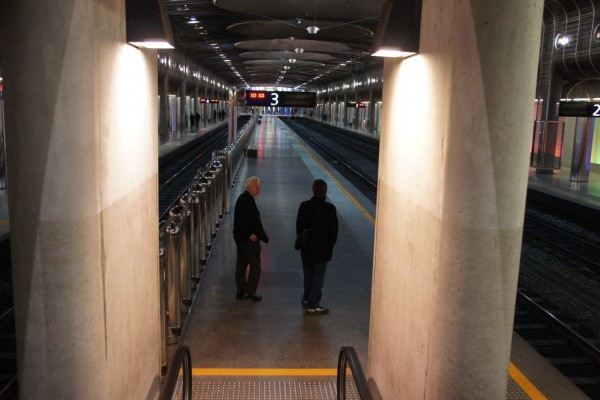
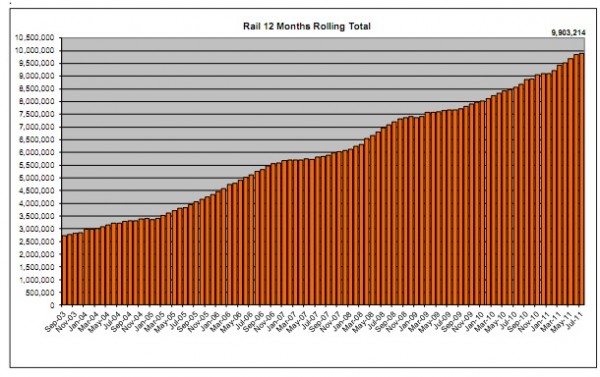
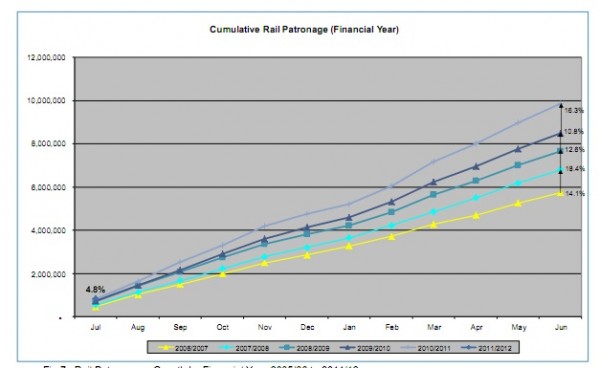
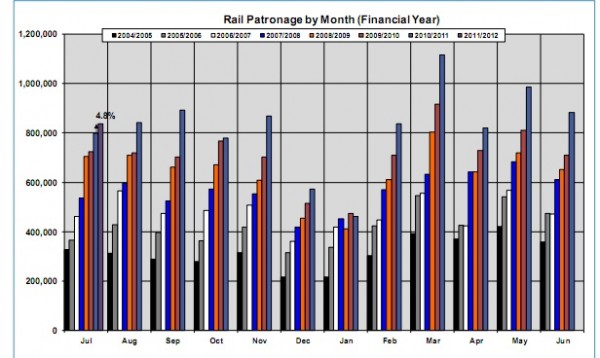
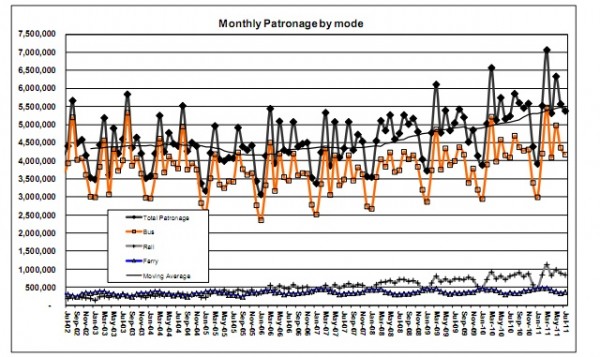
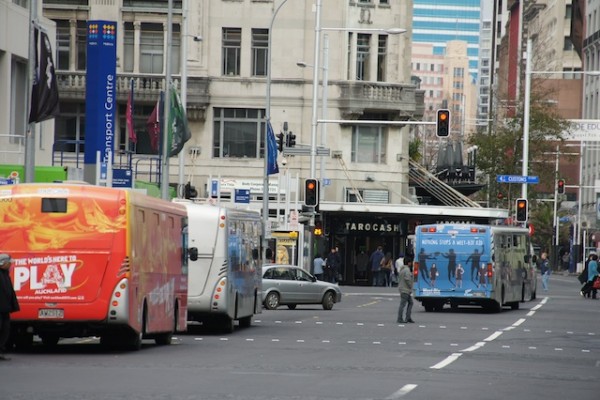










11 Comments
“During the evening of 9 July some Eastern Line services were rerouted via the Southern Line following a Police incident that resulted in a temporary block of line between Orakei and Britomart for a period of about one hour.”
good to see this sort of thing happening, rather than Veolia just putting the situation in the ‘too hard basket’ and cancelling all the services.
Just speaking of speed restrictions, what are the speed limits on the network? Is there a map lying around somewhere?
Well knowing that Auckland’s train network has some very very sharp bends, I doubt it is very high at all. If I was a train commuter, I would rather they pick up the reliabilty and frequency before redoing the tracks to improve the speed.
Pim askes a good question about speed restrictions. I’ve been using the Western, Southern and Onehunga lines for 2 months now and I cannot believe how poorly the tracks are aligned. Not withstanding the sometimes sharp bends the tracks are very bumpy in places and I would hate to go over them any quicker. This will have to be remedied before the new rolling stock arrives or they will not be able to use it to best advantage. I would certainly hope that the transit time from Mt Albert station to Henderson could be halved to 12 minutes if they get it sorted.
Great news. However, since Onehunga is so popular, how about increasing the service to every 30min a least-and fixing up the large gap between services around 10am.
Great great news. Go Auckland.
“Onehunga is booming – a line some critics said pre-launch that it would not be popular. There were 58.932 passengers recorded using the Onehunga Line during July 2011.”
Once again, I’ll point out that the counts are made at Ellerslie. The figure of 58,932 includes southern line passengers.
Onehunga line patronage is about half that amount. AT is every bit as good at fudging the figures as the best of the pro-road crowd!
It’s a bit worrying that there are talks about putting cars on the northern busway, this will only make public transport worse it will cause delays on the busway, and put people off from taking the bus into the city. One of the main reasons why the busway is popular is because the bus doesn’t get caught in traffic and can zoom past the traffic.
This is why NZ screws up all the time everything is about the cars not the people.
The busway was built for buses and HOV’s. Allowing HOV’s to use it will be the final stage of the project, as originally envisioned.
The whole thing was built on the proviso that HOV’s be allowed to use it. Without that, it would never have been built.
I don’t think HOV”s will slow it down, as the buses only do 80km/h. If anything, the buses will slow the HOV”s, if standard driver behaviour is anything to go by.
Geoff_184. The counts on the Onehunga services are done at 2 points. One between Greenlane and Ellerslie and the second one between Penrose and Te Papapa in both directions. Just thought I would clarify that for you.
Thanks @rachel - good to know how the numbers are produced.